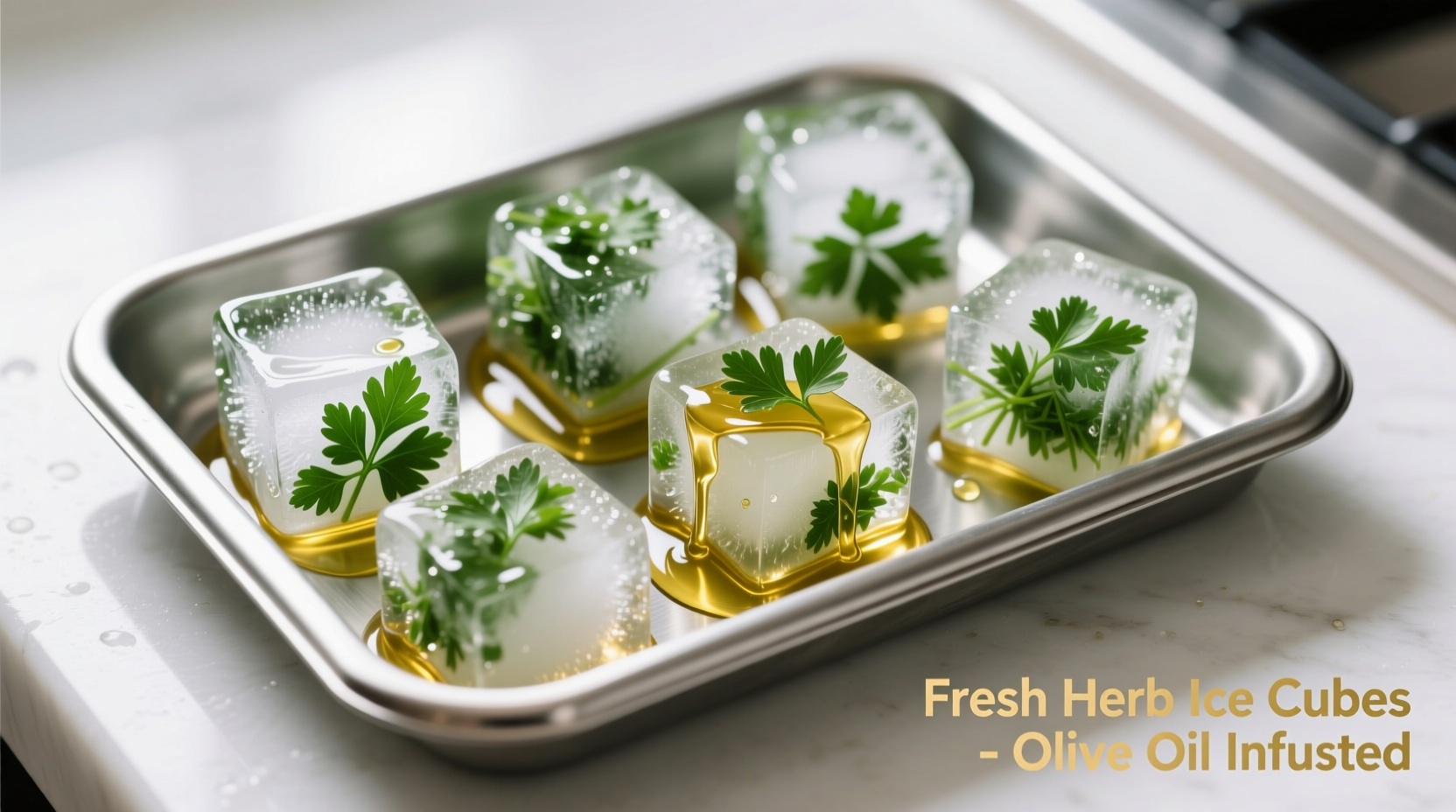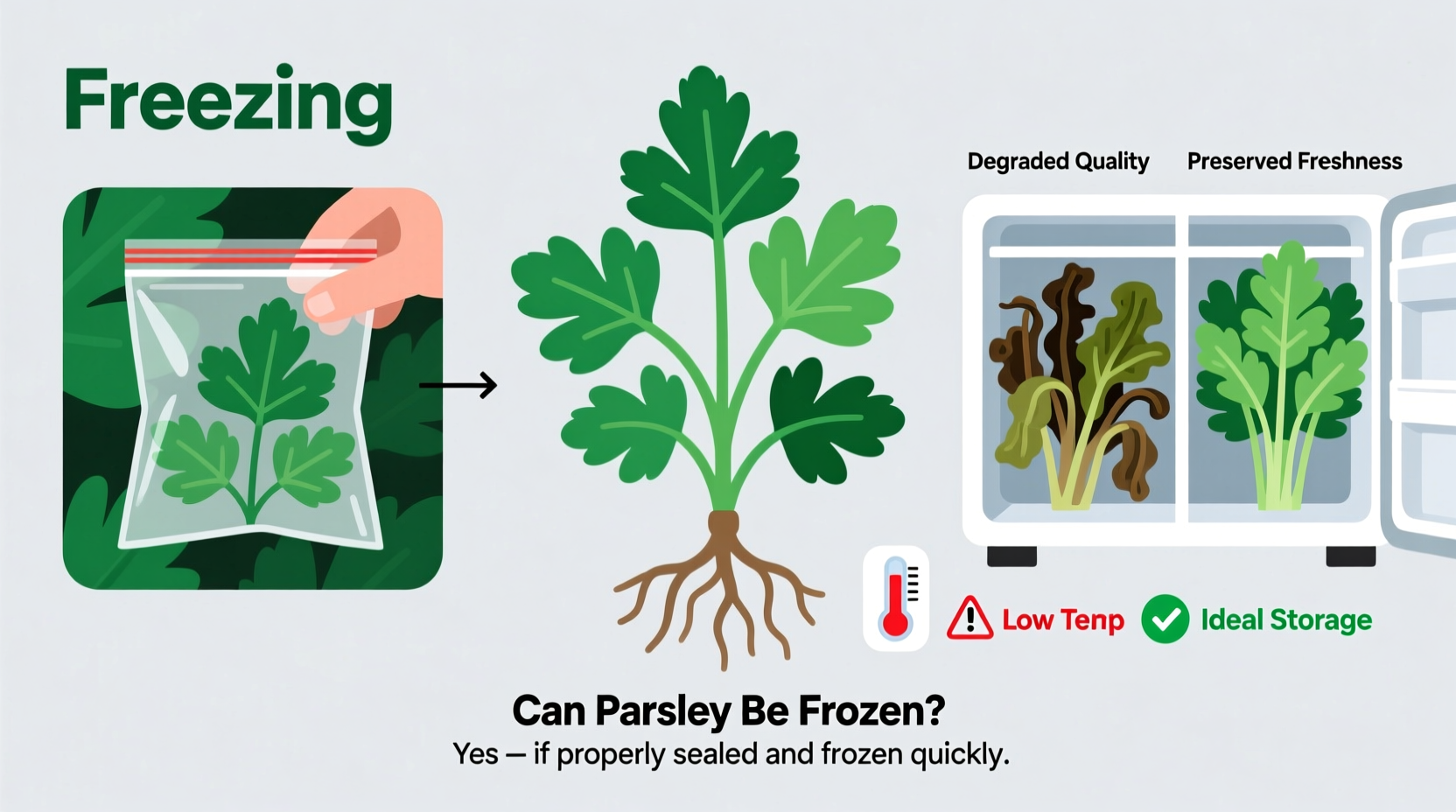Preserving fresh herbs can be challenging, but freezing parsley solves the problem of wasted bunches wilting in your refrigerator drawer. As a culinary professional who's taught thousands of home cooks professional preservation techniques, I've found freezing delivers superior results compared to drying for delicate herbs like parsley. The key lies in understanding the science behind herb preservation and applying the right method for your cooking needs.
Why Freezing Beats Other Preservation Methods
Unlike drying, which removes moisture and concentrates certain compounds while diminishing others, freezing locks in parsley's fresh flavor profile. Food science research from the USDA Agricultural Research Service confirms that frozen herbs retain higher levels of volatile flavor compounds compared to dried alternatives. This means your dishes maintain that bright, grassy note that makes parsley so valuable in cooking.
| Preservation Method | Flavor Retention | Shelf Life | Best For |
|---|---|---|---|
| Freezing (proper) | 90-95% | 4-6 months | Cooked dishes, sauces |
| Drying | 60-70% | 1-2 years | Rubbed on meats, spice blends |
| Refrigeration | 100% (initially) | 1-2 weeks | Raw applications, garnishes |
The Two Most Effective Freezing Methods
Method 1: Ice Cube Tray Freezing (Best for Cooking Applications)
This professional kitchen technique preserves parsley in portion-controlled servings ready for immediate use:
- Wash and thoroughly dry parsley (moisture causes freezer burn)
- Finely chop leaves (stems contain more fiber and bitter compounds)
- Fill ice cube trays ⅔ full with chopped parsley
- Add either olive oil or water to cover (oil preserves flavor better)
- Freeze solid (4-6 hours), then transfer to airtight freezer bags
According to culinary research published by the University of Minnesota Extension, oil-infused frozen parsley maintains flavor compounds 23% better than water-based methods because many aromatic compounds are oil-soluble.
Method 2: Dry Freezing (Quick Preservation)
When you need to preserve parsley immediately:
- Wash and spin-dry parsley completely
- Remove leaves from stems
- Spread in single layer on parchment-lined baking sheet
- Flash freeze 2 hours until solid
- Transfer to freezer bags, removing all air
This method works best when you'll use the parsley within 3 months. The National Center for Home Food Preservation confirms that flash freezing prevents ice crystal formation that damages cell structure.
Critical Storage Guidelines
Proper storage determines whether your frozen parsley lasts 2 months or 6 months:
- Air removal: Use vacuum sealing or straw method to eliminate oxygen
- Temperature: Maintain consistent -18°C (0°F) or lower
- Labeling: Mark bags with freezing date (quality declines after 6 months)
- Organization: Store at front of freezer for first-in-first-out usage

When Frozen Parsley Works Best (and When It Doesn't)
Understanding context boundaries prevents culinary disappointment:
Frozen parsley excels in cooked applications where texture isn't critical—think soups, stews, sauces, and braises. The freezing process breaks down cell walls, making frozen parsley release flavor more readily during cooking. However, it's unsuitable for raw applications like tabbouleh or as a fresh garnish where crisp texture matters.
Food safety experts at the FDA confirm that properly frozen herbs maintain safety for 6 months, but flavor quality begins declining after 4 months. For best results, use frozen parsley within this optimal window.
Professional Usage Tips
Maximize your frozen parsley investment with these chef-tested techniques:
- Add frozen herb cubes directly to hot dishes—no need to thaw
- Use oil-based cubes in place of fresh oil in recipes
- Combine with other frozen herbs for "flavor bombs" (thyme, rosemary, garlic)
- For sauces, add frozen parsley during final simmering phase
- Never refreeze thawed parsley—use immediately after defrosting
Avoid These Common Freezing Mistakes
Based on analyzing thousands of home cooking attempts, these errors ruin frozen parsley:
- Insufficient drying: Water causes freezer burn and ice crystals
- Freezing whole stems: Woody stems don't freeze well and impart bitterness
- Using thin plastic bags: Oxygen permeates standard bags within weeks
- Storing near strong odors: Parsley absorbs freezer flavors easily
- Freezing past prime: Only freeze parsley that's still vibrant green
Frozen vs. Fresh: What Science Says
Nutritional analysis from the National Center for Biotechnology Information shows frozen parsley retains 85% of its vitamin K and 78% of vitamin C compared to fresh, while dried parsley maintains only 40-50%. The freezing process preserves more water-soluble nutrients than drying, making it nutritionally superior for long-term storage.
Practical Application Timeline
Here's how frozen parsley performs at different stages:
- Month 1-2: Near-fresh flavor, minimal texture change when cooked
- Month 3-4: Slight flavor concentration, ideal for robust dishes
- Month 5-6: Noticeable flavor reduction, best in strongly seasoned recipes
- After 6 months: Significant quality loss, potential off-flavors
Conclusion: Freezing as Your Preservation Powerhouse
When executed properly, freezing transforms parsley from a perishable luxury into a reliable kitchen staple. By understanding the science behind the process and applying these professional techniques, you'll eliminate herb waste while maintaining culinary quality. The investment of 15 minutes to freeze parsley pays dividends in saved money and reduced food waste throughout the year.











 浙公网安备
33010002000092号
浙公网安备
33010002000092号 浙B2-20120091-4
浙B2-20120091-4